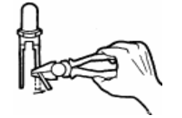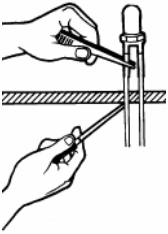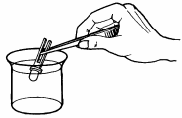技术支持

Electric current

(1) The normal working current of LEDs is 20mA, thus even a small fluctuation in voltage, say 0.1V, can cause big fluctuation in electrical current (10-15% change).
(2) The high electric current will cause the fast decline of burning out and luminance of LED.
(3) When designing the PCB board, proper number and size of current-limiting resistors should be used to make sure the LEDs work in optimal environment .
(4) The LEDs should work at same electric current; Recommended for use is in the range of 15mA to 18mA. Over-current shortens the LEDs lifespan, while less-than-normal current limits its performance.
Brightness Test & Instruction
 (1) While measuring and using LED, must provide the same electric current for each LED even measure in the source by flowing permanently , could guarantee to measure the consistency of luminance and other characteristics ;
(1) While measuring and using LED, must provide the same electric current for each LED even measure in the source by flowing permanently , could guarantee to measure the consistency of luminance and other characteristics ;
(2) Is it divide all color separation at the fine products, can't is it use at same product to mix different products of grade case symbol (each label have identification) to use, so as not to produce the color and luminance difference, if really want to mix the use of number of cases of the grade, the case number of the adjoin grade can be used together, but try one's best to avoid.
Defend static precautions
(1) All devices, Equipment, iron etc must be properly grounded.
(2) Before soldering, the operator must put on anti-static glove or anti-static wrist band and make sure the soldering iron is grounded. Blow the ion fan cancellation static electricity. Touching LED lead frames without taking these precautions is strictly prohibited. Because LEDs can only sustain static discharge up to 100V, the static discharge from human body can damage the chip substrate seriously. The damaged LEDs either fail immediately or work for some time (say 10 hours) and then fail.
(3) The anti-electrostatic wrist must carry on the test everyday, unqualified must replace.
(4) If there is LED that is damaged by the static, will show some bad characteristics , the electric current increases such as leaking electricity, the static behavior is obeyed and reduced or risen to the voltage, not bright and giving out light abnormally when the low electric current is tested.
Weld the condition
(1) Soldering: When soldering LED, the solder iron power should be not more than 30W and with the soldering time not more than 3 seconds. The Tip Temperature: 300℃ Max / the Dipping Position: No close than 3mm from the base of the epoxy bulb.
(2) Dip Soldering: Solder Bath Temperature: 260℃Max./ Dipping Time: 5 seconds Max. / Dipping Position: No close than 2mm from the base of the epoxy bulb.
(3) Do not apply any force of mechanical stress onto the leads or epoxy body during soldering heat is remained.
Forming
(1) Lead forming should avoid any stress to the LED body, to do so can fracture the device epoxy and possible break bond wire, forming location should be up to 2mm from the epoxy body.
(2) The support models to must use the tie-bar or is complete by the professional personnel.
(3) Leads should be formed before soldering.
(4) The interval of board hole of PCB and interval of LED foot should be corresponded to ;
Installation
(1) Pay attention to the permutation of all kinds of LED outside lines, prevent putting polarity by mistake. The condition of work mustn't exceed fixed limit.
(2) Please don’t to install the LED under the condition of frame to transform
(3) When determining the installation in the hole, must calculate panel and circuit board size, distance of hole and tolerance in case that avoid the excessive pressure.
(4) While installing the LED, suggest using to lead a set of fixed position.
(5) Before the temperature of welding gets back to normally , must avoid making LED shake external force by the any.
Cleaning

(1) Must be very careful when wash the LED with the chemicals, some chemicals will damage the colloid surface and cause fading. For example Trichloroethylene, acetone, etc. If the LED must clean, Could dip the LED in ethanol at normal temperature for less than 3 minute.
Operating Temperature & Storage Temperature
(1) LED LAMPS : -30℃~80℃ & -40℃~85℃
(2) LED DISPLAYS : -20℃~70℃ & -20℃~85℃
(3) OUT-DOOR LED LAMPS : -20℃~60℃ & -20℃~70℃
